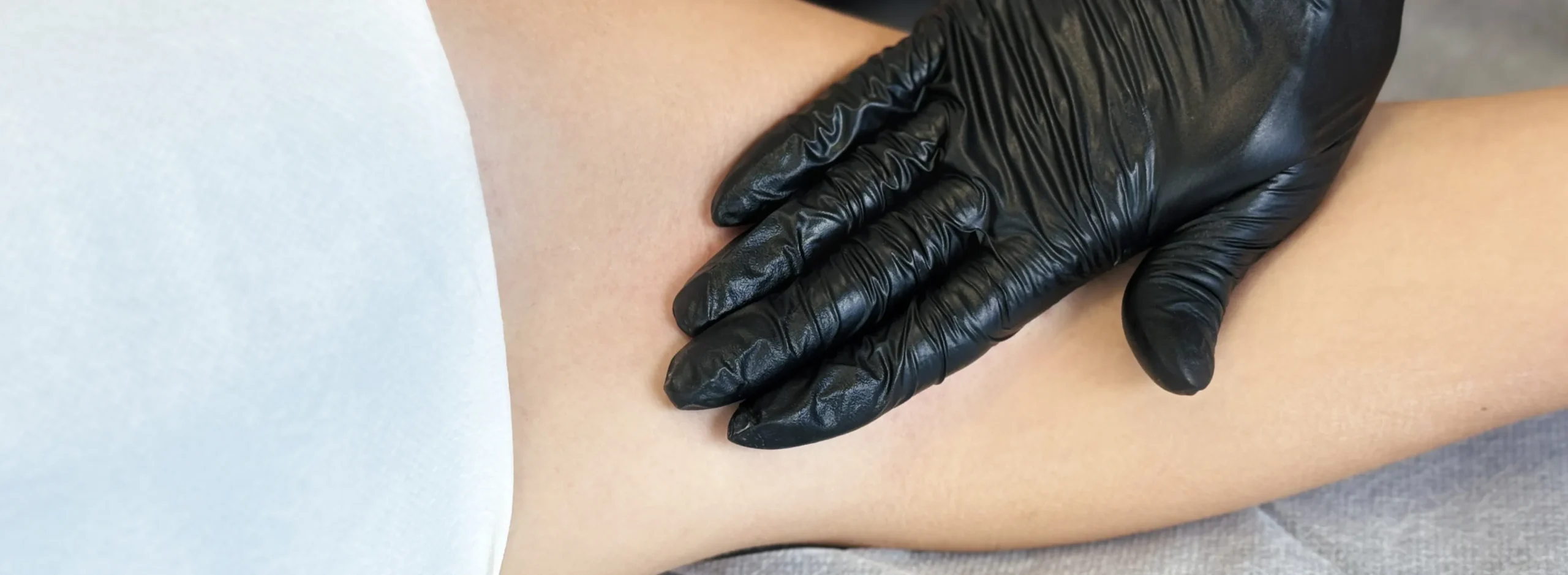FREE SHIPPING on orders over $400!
FREE SHIPPING on orders over $400!
FREE SHIPPING on orders over $400!
FREE SHIPPING on orders over $400!

An ingrown hair cyst forms when a hair curls back into the skin or grows sideways rather than outward. This condition typically starts as a minor ingrown hair, but if the follicle becomes blocked or infected, it can develop into a larger cyst. The cyst might appear as a soft or firm lump beneath the skin, filled with fluid, pus, or keratin debris. Common causes include improper shaving techniques, clogged pores, friction from tight clothing, or naturally curly hair that is more likely to loop back into the skin.
While these cysts can form anywhere on the body, they are especially common in areas subjected to frequent shaving or waxing, such as the face, neck, bikini line, armpits, and legs. Understanding what leads to these cysts is key to choosing the best ingrown hair cyst treatment strategy and avoiding future problems.
The type of ingrown hair cyst you develop can depend on how deep the hair is trapped beneath the skin. Some cysts are small and superficial, forming just under the surface, while others can become larger and deeper, leading to more significant swelling and discomfort. Identifying the type early can help determine whether home care is sufficient or if medical treatment will be necessary.
Early signs of an ingrown hair cyst include a small red bump that might feel tender to the touch. As the cyst develops, it can enlarge and become painful, and you may notice swelling or localized warmth in the area. In some cases, fluid may drain from the cyst, which can be clear, yellow, or even contain traces of blood or pus if an infection has developed.
When should you be concerned? If the cyst grows rapidly, becomes increasingly painful, or is accompanied by fever or chills, you may be dealing with a deeper infection that requires medical attention. In such cases, contact a healthcare provider promptly. Ignoring these signs can allow the infection to spread, potentially causing more serious skin and tissue damage.
For many people, home remedies are the first line of defense when managing an ingrown hair cyst. Some safe and effective methods include:
If you’re wondering how to get rid of ingrown hair cyst safely at home, patience is key. Allow the cyst to resolve naturally and resist the urge to pick or squeeze it.
While it might seem tempting, squeezing or popping an ingrown hair cyst is not recommended. This action can force bacteria deeper into the skin, spreading the infection and potentially forming an abscess. Additionally, improper handling increases the risk of scarring, especially for those with darker skin tones who are more prone to pigmentation issues.
Rather than resorting to popping, it’s better to stick with proven remedies like warm compresses or seek professional ingrown hair cyst removal from a qualified provider. Remember, the best way to get rid of ingrown hair cyst is through gentle care, not aggressive action.
Sometimes, home methods are not enough. If a cyst becomes painful, grows larger, or shows signs of infection, medical treatment may be necessary. Professional ingrown hair cyst removal options include:
Medical professionals have the tools and sterile environment needed to perform safe removal procedures, reducing the chance of complications.
Doctors will evaluate the type of cyst you have before recommending a course of action. A cyst showing signs of infection may require both drainage and a prescribed antibiotic, while a non-infected cyst could respond to a corticosteroid injection alone. The type of treatment chosen will aim to resolve the cyst effectively while minimizing the risk of scarring or recurrence.
The most effective ingrown hair cyst treatment is prevention. By taking proactive steps, you can lower your risk:
Incorporating these steps into your routine reduces your chances of needing to figure out how to remove ingrown hair cyst later on.
Preventing cysts often comes down to choosing the right type of hair removal method for your skin and hair. For example, people with curly hair types may benefit more from laser hair removal than frequent shaving, as laser treatments reduce the likelihood of hairs curling back into the skin. Understanding your type allows you to take proactive steps that align with your body’s natural tendencies.

It’s important to know when it’s time to see a doctor or dermatology provider. Seek help if:
A professional can assess your skin and recommend the most effective treatment plan.
For some individuals, ingrown hair cysts may become a chronic problem, particularly in areas where hair is coarse or curly. This can lead to the formation of sinus tracts under the skin, which may require more complex surgical management. Your provider might recommend imaging or a biopsy if a cyst repeatedly returns to rule out other conditions.
It’s a common misconception that all cysts need to be lanced immediately or that squeezing them speeds healing. In reality, improper intervention can prolong healing or cause more damage. Similarly, applying harsh chemicals or untested home recipes can worsen irritation. Stick with proven remedies or consult your healthcare provider for the safest options.
Alongside specific treatments, overall skin health plays a role in preventing cysts. Maintain a balanced diet rich in vitamins that support skin repair, stay hydrated, and avoid unnecessary contact with irritants. Regular checkups with your provider can help address underlying issues contributing to follicle blockages.
Learning how to get rid of ingrown hair cyst effectively takes time, care, and sometimes professional guidance. Whether through home strategies like warm compresses, medical treatment, or preventative changes, managing these cysts is possible. Remember, the answer to the question “How to remove ingrown hair cyst safely?” is avoiding harmful habits like squeezing and trusting trained professionals when needed. When in doubt, choose the best way to get rid of ingrown hair cyst: the method that prioritizes your skin’s health and minimizes future risk.


